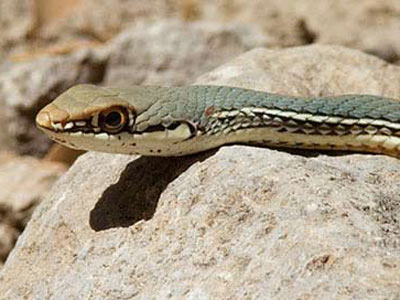Recent surveys for amphibian and reptile species have been conducted in most parks in the American Southwest. In some cases, these inventories focused on amphibian and reptile species, and in other cases these groups were surveyed as part of vertebrate surveys.

© Robert Shantz
For results of recent inventory projects, see the articles for herpetofauna in the Reptile and Amphibian projects section of the Science of the American Southwest webpage. Inventories have been conducted in the SCPN for nearly all parks (report dated 2006); in the SODN for all parks (reports dated 2005-2008); in the CHDN for all parks (reports dated 2005); and in nearly all SOPN parks (reports dated 2002-2004).
Amphibians and/or reptiles have not been identified as a vital sign in any of the Southwest’s four I&M networks. Therefore, there is no network-wide or larger area-wide, uniform monitoring of these animals. Many parks, however, have conducted research or monitoring for individual species or groups of herpetofauna, in addition to the inventory projects mentioned above. Some of these research/monitoring projects include:
- Impacts of urbanization on the desert tortoise in Saguaro NP (SAGU; Averill-Murray and Swann 2002), and other studies (Zylstra and Swann 2009).
- Movement patterns, range requirements, dietary habits, and use of developed areas by Gila monsters at Tonto NM (Nowak 2006b).
- Rattlesnake-human interactions in Arizona national parks (Nowak 2006c, Nowak 2006d).
- Lizard monitoring in Organ Pipe Cactus NM (ORPI) (Conner and Holm 2006).
- Sonoyta mud turtle research and management in ORPI (Rosen et al. 2006).
- Management strategy for the lowland leopard frog in SAGU (Swann and Wallace 2008).
- Long-term research on tree lizards at SAGU (e.g., M’Closkey and Baia 1990).
Prepared by Patricia Valentine-Darby, Southern Plains Network Inventory and Monitoring Program, 2010.
Part of a series of articles titled Reptiles and Amphibians of the American Southwest.
Last updated: May 20, 2015
